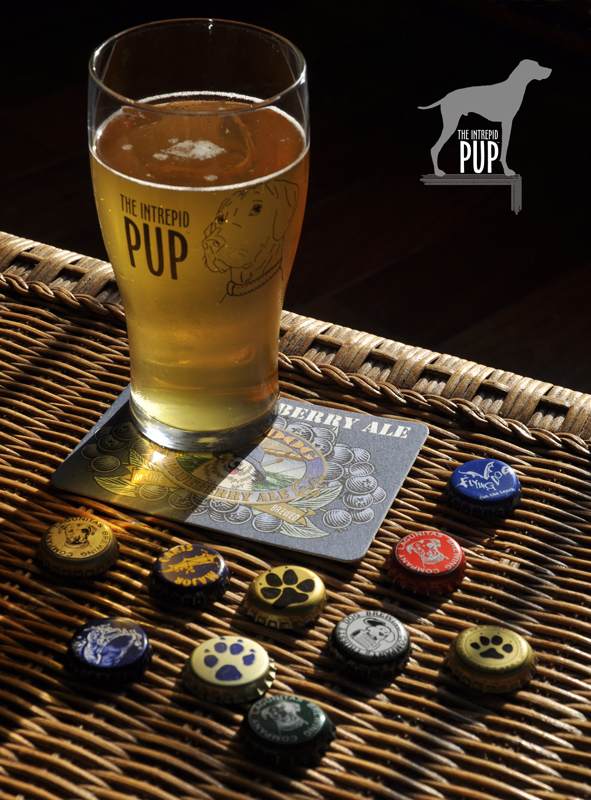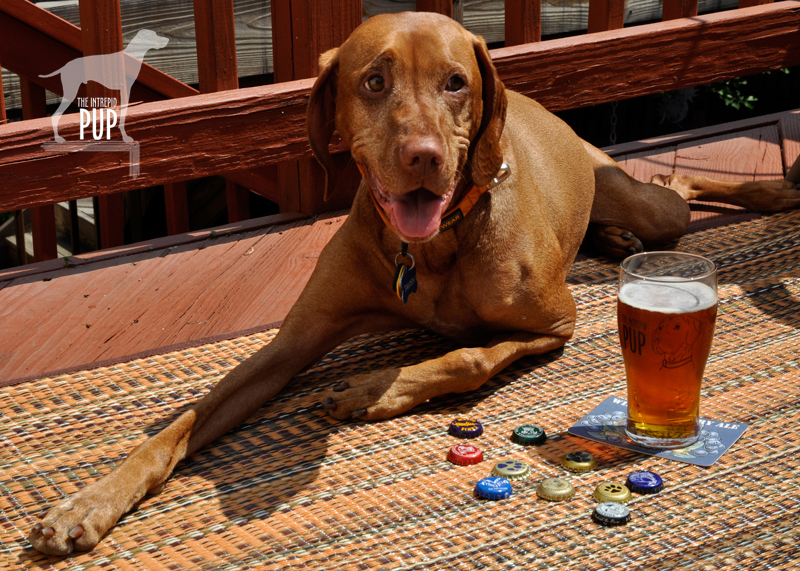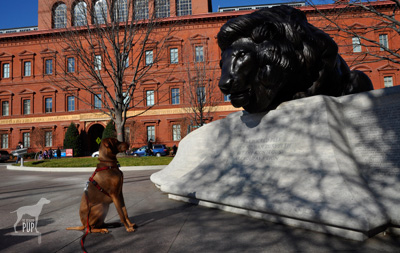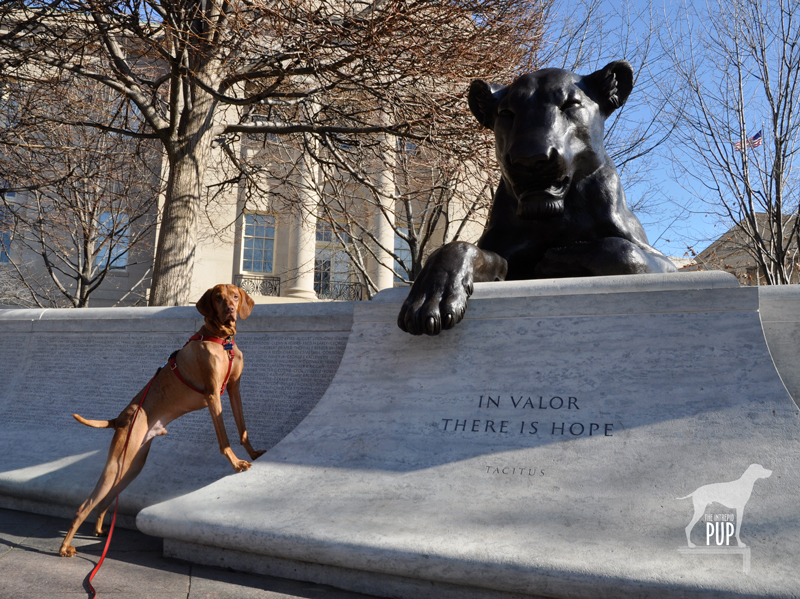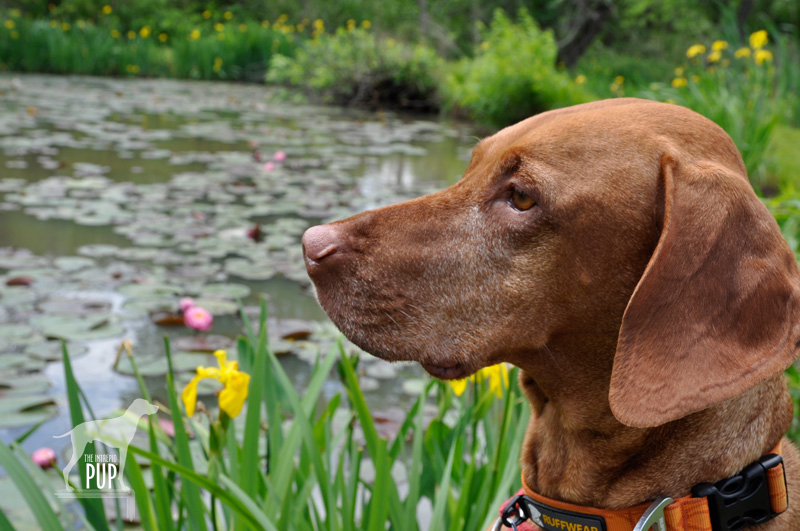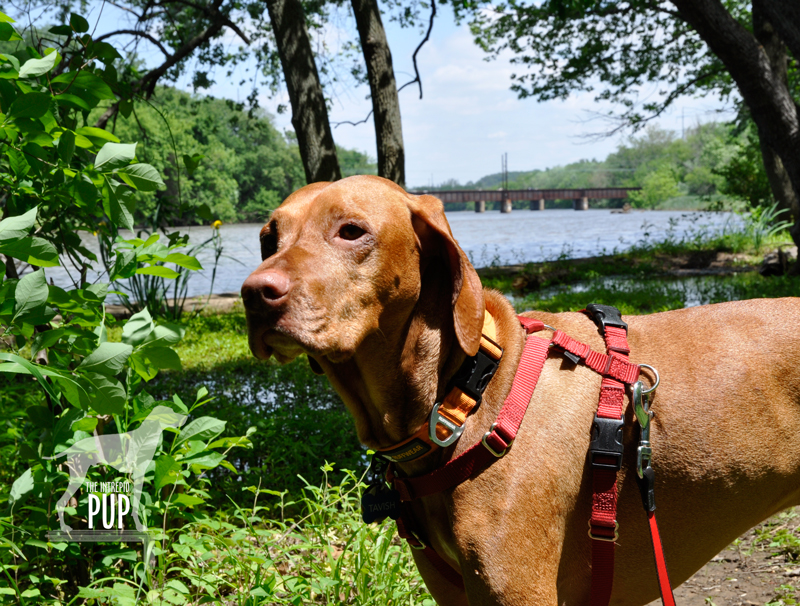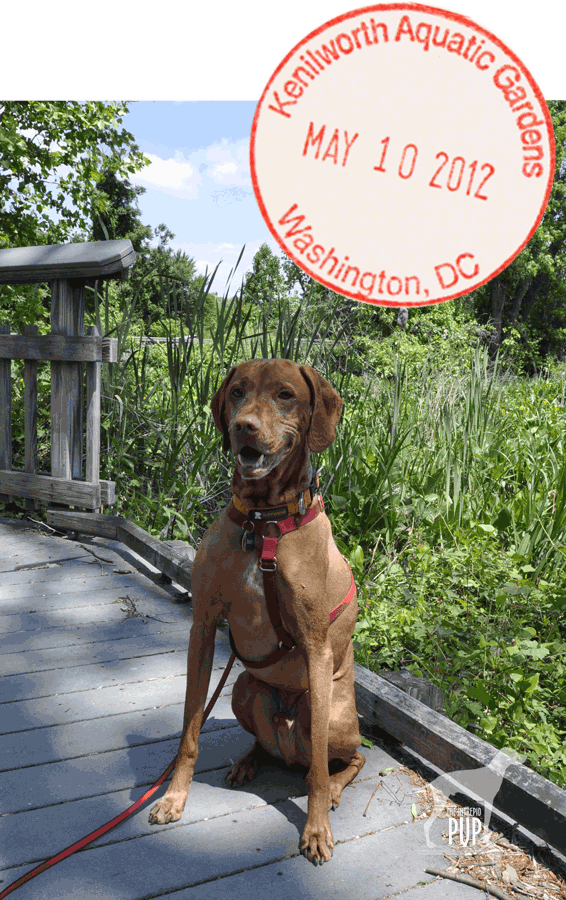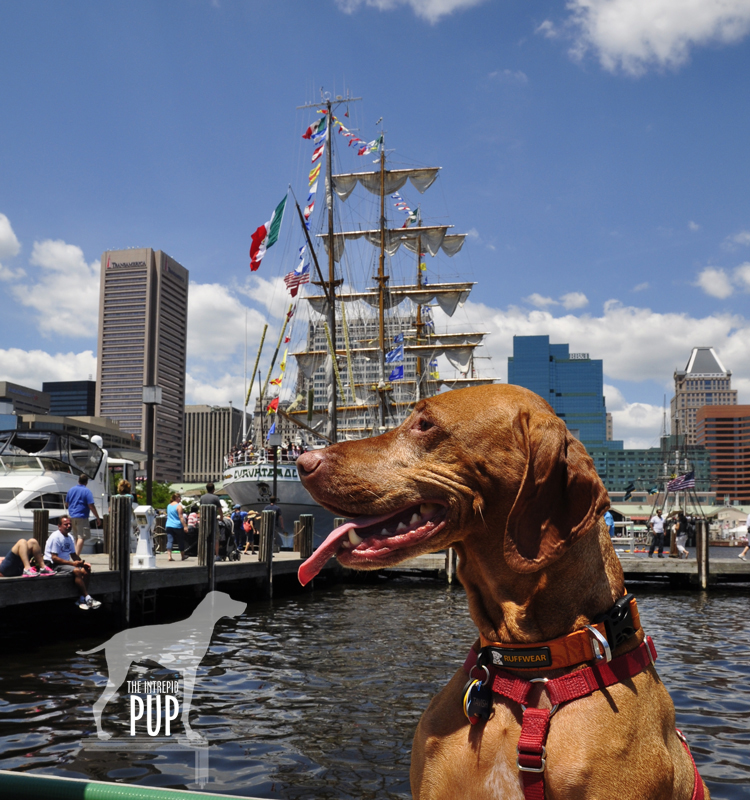
Tavish gazes at Baltimore’s Sailabration festivities and the visiting ARM Cuauhtémoc, a Mexican Navy tall ship whose home port is Acapulco.
From June 16 through June 19, 2012, Baltimore put the “charm” in Charm City by rolling out the welcome mat, inviting more than 40 tall ships and navy vessels, and dialing in some stellar low-humidity “Chamber of Commerce” weather…all in the name of a Star-Spangled Sailabration commemorating the bicentennial of the War of 1812.
Not one to miss an historic event, Tavish the Intrepid Pup joined the throngs last Saturday. With activities happening citywide at five separate locations, this had the makings of being a logistical and traffic nightmare, so we were pleasantly surprised at how easy it actually was to get downtown. We decided to forgo parking at M&T Bank Stadium when we saw people lined up to park and catch shuttle buses to the various venues and opted instead to park a little further north in Redwood Garage on South Eutaw Street for a reasonable $16 daily rate. Turns out that this parking garage is a neighbor of the historic Bromo Seltzer Tower and the Baltimore City Fire Department. A few of the firemen standing in the open bay for Engine 23 offered up dog biscuits and a head pat to Tavish as we walked back by. What a nice welcome! It was just a few more blocks down to the heart of the Inner Harbor area. To take it all in, we headed all the way over to the south side and up the embankment of Federal Hill. It offers a pretty spectacular panoramic overlook of the Inner Harbor, even when there aren’t performance stages, food pavilions, an Adventure Zone, and all those visiting ships!
There were Class B tall ships hailing from ports throughout the country, Class A tall ships (square-rigged, over 40 meters) from as far away as Indonesia and Brazil, and research vessels and gray hulls representing Canada, Denmark, Japan, Mexico, Norway, the UK and the USA. Bedecked with signal flags, they were a colorful sight to behold. All the ships were open for free public tours, but Intrepid Pup was content to skip the lines and take in the views dockside. We even caught a few glimpses of the U.S. Navy’s Blue Angels doing their precision flyover formations as part of the afternoon airshow.
Just because Sailabration has now concluded doesn’t mean that the official celebration has. Four historic ships are permanently berthed in the Inner Harbor and open for tours: USCGC Taney (the last surviving warship of Pearl Harbor), the submarine USS Torsk, the Lightship Chesapeake and the sloop USS Constellation. And what’s more, with the War of 1812 so firmly embedded in Baltimore’s cultural identity, its related must-see attractions (Fort McHenry and the Star-Spangled Banner Flag House) are open year round.
With its proximity two blocks east of the Inner Harbor, we viewed a walk over to visit the Star-Spangled Banner Flag House as a good chance to temporarily escape the growing congestion on the piers.
The red brick Star-Spangled Banner Flag House dates to 1793 and is a registered National Historic Landmark for good reason: it was here in 1813 that flagmaker Mary Young Pickersgill and eight other women took six weeks to fulfill a purchase order from Fort McHenry’s commanding officer Major George Armistead for an enormous 30′ x 42′ garrison flag. It was this same flag—still flying after British bombardment of the fort on September 13-14, 1814—that inspired attorney Francis Scott Key to pen the poem that would become the U.S. national anthem. What’s striking about the building is its size. Though relatively roomy by 19th-century standards, you have to keep in mind that this was not only Pickersgill’s house but also her office and “factory.” Most of the flags she sewed or painted for vessels in the Port of Baltimore were far smaller in scale. The soon-famous “star-spangled banner” was fashioned from approximately 400 yards of (ironically) British wool bunting. Each of the 15 stars measured two feet tip to tip, and each of the 15 stripes was two feet wide. In short, this meant that the nearly 100-pound flag was far too cumbersome to piece together in her house, so Pickersgill secured permission to finish it on the malthouse floor of Brown’s Brewery a block away! Amazingly enough, the signed receipt for the flag is retained in the museum’s archival collections. The total bill came to $405.90 for the labor and materials to create the star-spangled banner and a slightly smaller storm flag for the fort to use in inclement weather.
Dogging the Details

39°16′49.01″N, 76°36′31.27″W
Inner Harbor, Baltimore, Maryland
39°17′14.89″N, 76°36′12.57″W
Star-Spangled Banner Flag House, Baltimore, Maryland
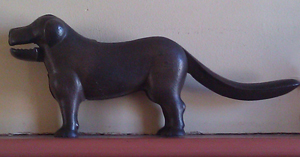
Check out this dog-shaped nutcracker! Intrepid Pup approves. It’s one of many typical 19th-century household implements displayed in the Star-Spangled Banner Flag House. Look for it on the mantel above the hearth in the kitchen when you visit!
As always, we had plenty of water on hand. And, ever mindful of the heat of the midday sun, we made frequent stops for our shade-mongering Intrepid Pup. Fortunately, Baltimore’s Inner Harbor is pedestrian-friendly and well equipped with watering holes, benches, and scenic views for the two- and four-legged alike.
As one might guess, the historic Star-Spangled Banner Flag House isn’t pet friendly, but the exceptionally helpful visitor services staff did allow our Intrepid Pup a brief respite in the adjoining modern, air-conditioned visitors center where we watched a 10-minute introductory film. In fact, all this hospitality is what earned our Sailabration excursion an enthusiastic “2” on the Intrepid Pup wag-a-meter! While half of Team Tavish then went on the approximately 30-minute tour of the house (you can choose between docent-led or self-guided via cell phone), the other half of Team Tavish stayed outside with Tavish.
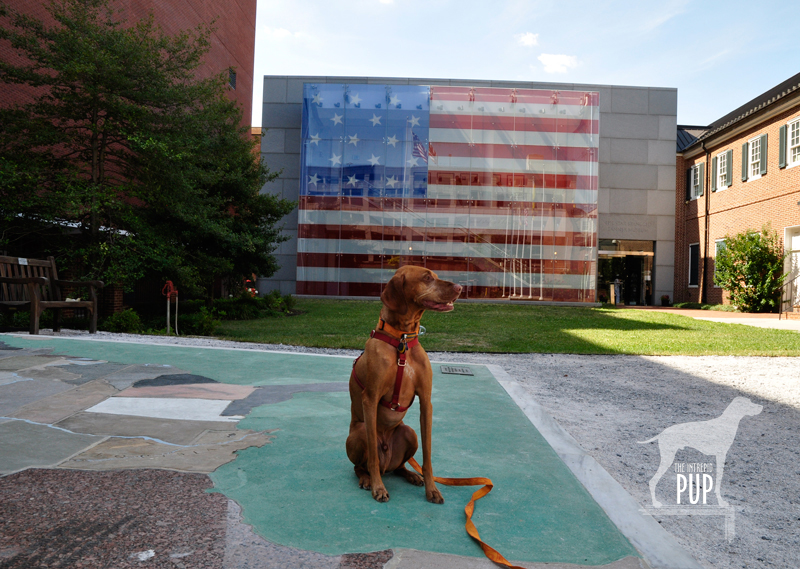
Outside the Flag House, there’s a spacious courtyard. Tavish is sitting on a clever outline map of the U.S. where each “state” is made of the official state stone (i.e. Petoskey stone for Michigan, granite for New Hampshire, etc.). The flag in the background is the same size as Mary Pickersgill’s 1813 star-spangled original. What Tavish didn’t get to experience was the house tour and the museum gallery and kids’ discovery center on the first floor of the visitors center…but he did see the film!

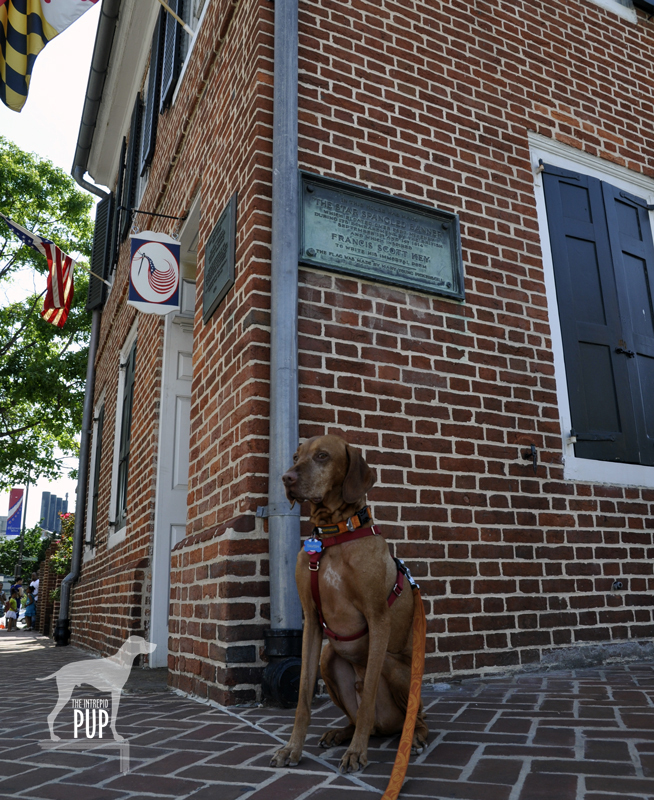
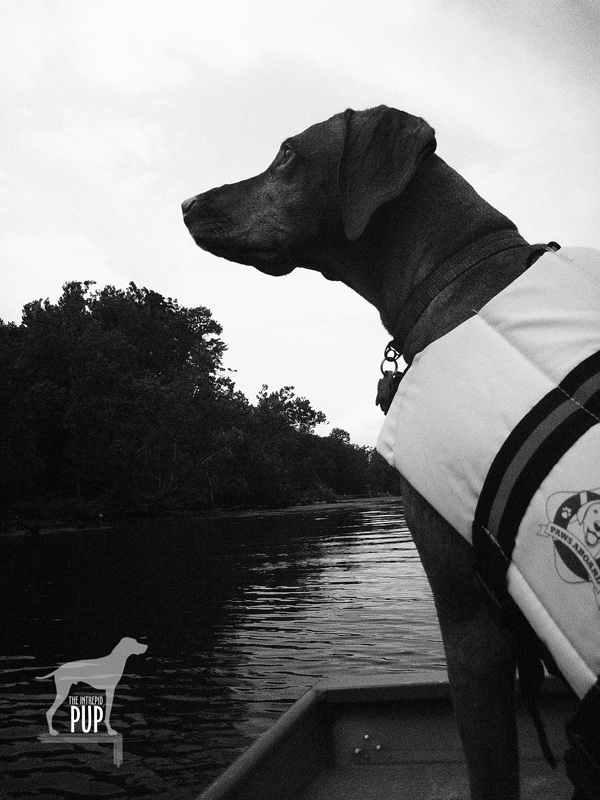 Are you indoors reading this? If so, take it outside!
Are you indoors reading this? If so, take it outside!